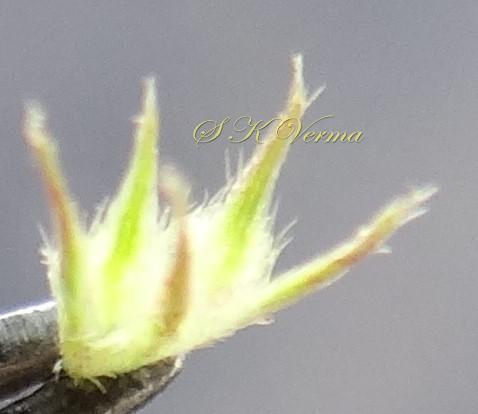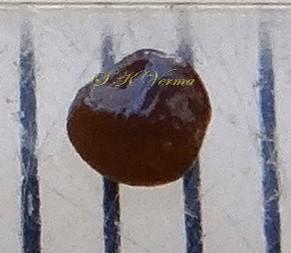INDIGOFERA
Indigofera
L., Sp. Pl. 751; Gillette, Kew Bull. Add. Ser., 13: 1. 1958; Ali, Bot. Notiser 111: 543. 1958; Collett, Fl. Siml. ed. 2. 120. 1921 (Reprint 1980); Gao & Schrire, Fl. China @ eFloras.org 10: 137; Fl. Pak. @ eFloras.org p. 65.
Herbs or shrubs more or less covered with white, adpressed medifixed hairs (fixed by centre), sometimes mixed with simple hairs. Leaves imparipinnate; leaflets 5 or more, rarely 3 or 1, entire, usually opposite; stipules usually small, shortly united to base of petiole. Flowers bisexual, zygomorphic, 5-merous, perigynous, red, pink or purple in axillary erect racemes, rarely in ovoid heads or solitary. Bracts minute or long and more or less enclosing the flower buds, falling off as the flowers expand. Calyx small, campanulate; teeth 5, subequal or the lowest longer. Corolla papilionaceous, usually reddish, sometimes white or yellow, petals soon falling off except sometimes vexillum; vexillum obtuse to emarginate, mucronate, covered outside with adpressed hairs, occasionally glabrous, shortly clawed; keel gibbous on each side, often spurred; wings slightly cohering the keel. Stamens 10, diadelphous (9+1), vexillary stamen free, anthers uniform, tipped with a minute point. Monocarpellary, ovary sessile, unilocular, ovules usually many, rarely 1 or 2, placentation marginal; style glabrous, incurved; stigma small, capitate, often minutely hairy. Legumes linear-cylindric, globose or nearly so, straight or slightly curved, often deflexed; seeds 6-12, rarely only 2, separated by pith-like partitions. Seeds globose to cylindric, truncate, compressed or quadrate.
713 species
Indigofera linnaei
Indigofera linnaei
Ali, Bot. Notiser 111: 572. 1958; Maheshwari, Illustr. Fl. Delhi. f. 56. 1966; Ali in Nasir & Ali, Fl. W. Pak. 100: 75. 1977; Kaur & Sharma, Fl. Sirmaur 265. 2004; Singh & Sharma, Fl. Chamba Dist. 277. 2006; Fl China @ eFloras.org 10: 144; Fl. Pak. @ eFloras.org p. 75; Indigofera enneaphylla L., Mant. Pl. 2: 272. 1771; Baker in Hook. f., Fl. Brit. Ind. 2: 94. 1879; Collett, Fl. Siml. ed. 2. 121. 1921 (Reprint 1980).
Prostrate or decumbent-ascending, much branched, silvery white, appressed pubescent, annual-perennial herbs. Leaves 1.5-3 cm long, imparipinnate; leaflets 5-9(-11), alternate, 8-11 mm x 2-3.5 mm, subsessile, oblanceolate, obtuse to emarginate, mucronate, appressed-pubescent on both surfaces, hairs medifixed; rachis with adaxial groove. Stipules 3-4.5 mm long, ovate or lanceolate, acuminate, pubescent or glabrous. Flowers bisexual, zygomorphic, 5-merous, perigynous, papilionaceous, 4.5-6.5 mm long, bright red; in dense axillary, globose, 4-11 mm long racemes; peduncle ca. 2 mm long, silky hairy. Bracts 2-3 mm long, ovate, acuminate, pubescent without. Calyx 3-4.5 mm long, campanulate, appressed-pubescent, teeth 5, longer than tube. Corolla 5, papilionaceous; vexillum 3-5 mm x 2.5-4 mm, red, broadly ovate to orbicular, hairy outside; wings ca. 5 mm x 1 mm, glabrous, margin shortly ciliate; keel 3-4 mm x ca. 1.5 mm, glabrous, margin shortly ciliate, lateral spur ca. 0.5 mm, claw long, ca. 2 mm. Stamens 10, diadelphous (9+1), staminal sheath 2.5-4 mm long, vexillary stamen free, all anthers uniform, apiculate. Ovary sessile, unilocular, ovules usually (1 or) 2 or 3, placentation marginal; style glabrous, incurved; stigma small and capitate. Pods 3-6.5 x 2-3 mm, oblong, apiculate, appressed medifixed pubescent, 1-3 (usually 2) seeded. Seeds ca. 2 mm x 2mm, quadrate, brown, smooth and shiny.
Common Names: Birdsville Indigo; Leel, Latahai, Bekario (Hindi)
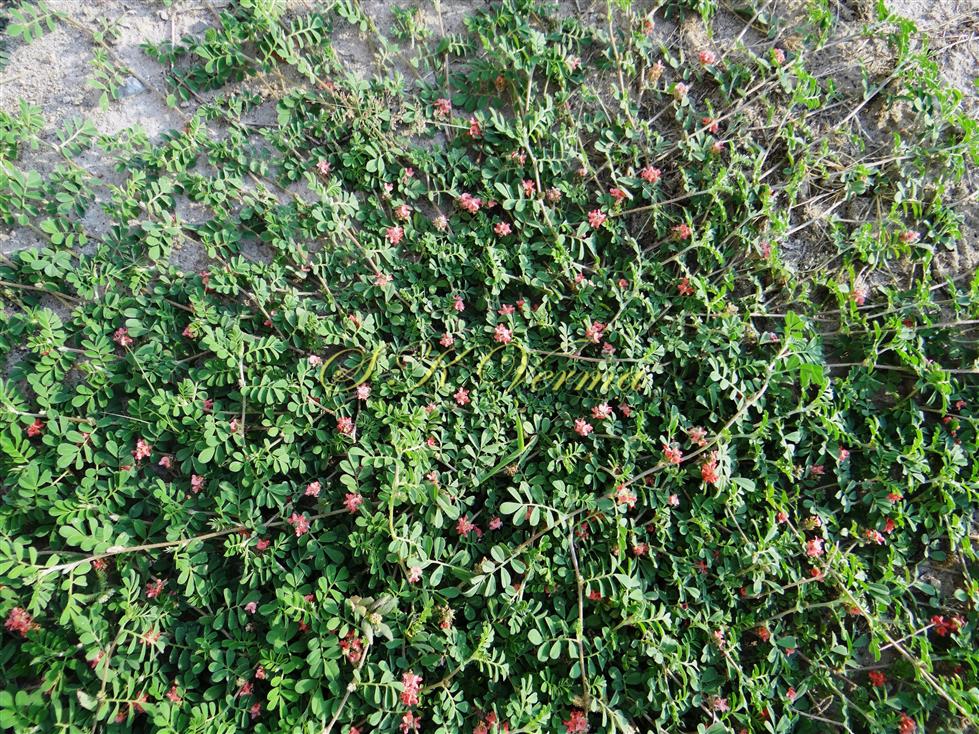
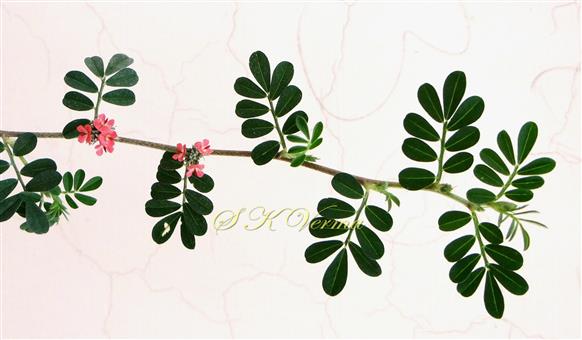
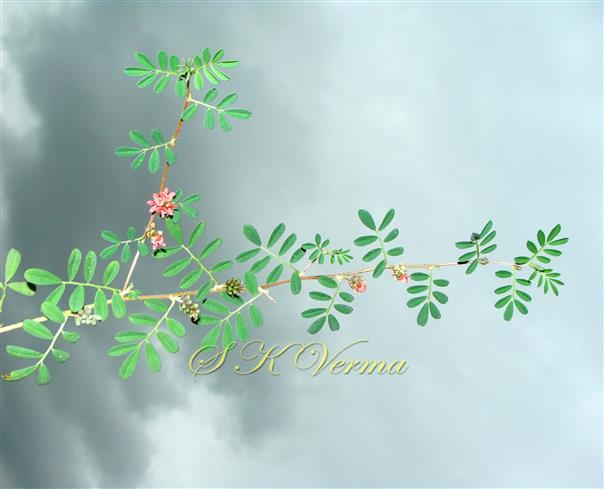
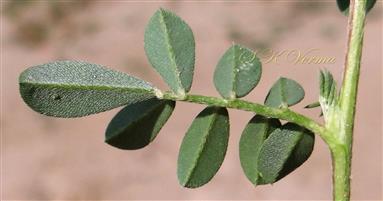
, stipules and Inflorescence-DSC08322.jpg)
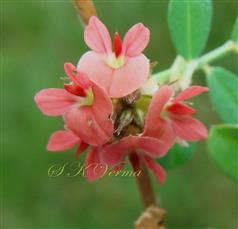
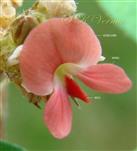
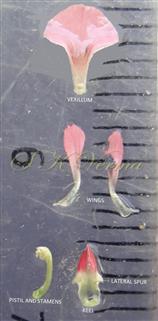
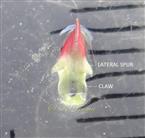
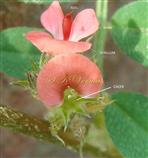








, stipules and Inflorescence-DSC08322.jpg)





